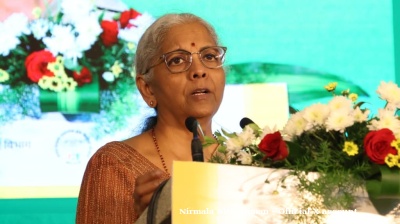The United Nations Educational, Scientific and Cultural Organisation (UNESCO) has the archaeological remains of Hegmataneh (also known as Ecbatana) northwest of Iran on its World Heritage List, marking the country's 28th inscription.
Hegmataneh, known in antiquity as Ecbatana, is a site of immense historical significance located in modern-day Hamadan, Iran. This ancient city, believed to be the capital of the Medes and later a significant administrative center for subsequent empires, offers a unique glimpse into the rich tapestry of ancient Near Eastern civilizations.
The ancient site was inscribed during the 46th session of the World Heritage Committee, which is currently underway in New Delhi, India, July 21-31.
Ecbatana has a history spanning more than 3,000 years and was the capital of the Median Empire. Later, it served as a summer capital for the Achaemenid, Seleucid, Parthian, and Sasanian empires.
The site provides significant archaeological evidence of these civilisations, including a massive defensive wall and a checkerboard urban plan.
Iran’s original dossier contained a larger area within Hamedan’s historic inner city, including Hegmataneh’s old bazaar and 140 historical sites. But the site was eventually inscribed as Hegmataneh alone.
Iran’s deputy minister of tourism, Ali Darabi, said on July 27 that the designation would create enough protection for the city’s historic neighbourhood.
Iran already had 27 sites on the coveted list and over 50 more on the tentative list to be considered later for nomination. Initially, the Islamic Republic, after the revolution, attempted to downplay pre-Islamic Iran as the former regime of the Shah of Iran promoted it but in recent years, the government have acknowledged the rich history of the country as a tourism driver.
Hegmataneh is renowned for its impressive fortifications and grand architectural structures. The city was reportedly encircled by seven concentric walls, each painted in a different colour, symbolising various planets and celestial bodies—a testament to the sophisticated astronomical knowledge of the time.
Excavations in the area have unearthed a wealth of artefacts, including inscriptions, pottery, and remains of ancient buildings. These discoveries have provided valuable insights into the urban planning, daily life, and cultural practices of the city's inhabitants over millennia.
One of the most significant findings is the ruins of the royal palace, which is believed to have been a magnificent structure adorned with intricate reliefs and luxurious decorations. The palace complex, with its grand halls and courtyards, reflects the city's status as a political and cultural hub.
News

Trump authorises CIA covert operations in Venezuela to topple Maduro
The White House has acknowledged granting the Central Intelligence Agency sweeping powers to conduct covert operations aimed at unseating President Nicolás Maduro, the NYT reported.

India’s finance minister to miss upcoming IMF and World Bank meetings
India’s Finance Minister Nirmala Sitharaman will not attend this week’s annual meetings of the International Monetary Fund and World Bank in Washington, as trade negotiations between New Delhi and Washington remain unresolved.

Young Ukrainians asylum seekers fleeing the war for Germany surges
The number of young Ukrainian fleeing the war and seeking asylum in Germany has surged, following Ukraine’s decision to partially lift its travel ban for men aged 18 to 22, according to figures from the German Interior Ministry.

US may double support for Argentina to $40bn conditional on policy reforms
Washington buys Argentine pesos and mulls creating a new private sector-led $20bn debt facility, which would bring total support to $40bn with the existing swap line, Treasury Secretary Bessent said.




